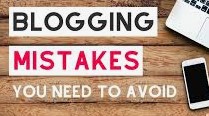Content creation is the lifeblood that drives traffic, engages readers, and builds a strong online presence. Whether you are a seasoned blogger or just getting started, understanding how to create high-quality content that resonates with your audience is crucial. In this ultimate guide to content creation for bloggers, we’ll explore the key aspects of content creation, including the planning, writing, optimizing, and promoting of content to ensure your blog thrives.
1. Understanding Your Audience
Before you start creating content, it is essential to understand your target audience. Your audience’s interests, pain points, and preferences will guide the topics you write about, the tone of your writing, and how you present your content. Here are a few steps to understand your audience better:
1.1 Identify Your Niche
A niche refers to the specific area or topic your blog focuses on. Whether it’s travel, technology, health, or personal finance, having a niche helps attract the right audience. To find your niche, consider your passions, knowledge, and what topics resonate with your target readers.
1.2 Conduct Audience Research
You can learn about your audience through surveys, polls, and feedback forms. Additionally, you can use analytics tools like Google Analytics, social media insights, and forums to understand what people are searching for and what problems they need solving. Tools like Answer the Public and SEMrush can also provide useful insights into the questions and concerns of your target audience.
1.3 Create Audience Personas
Audience personas are fictional representations of your ideal readers. These personas help you understand the motivations, goals, and challenges of your audience. When crafting your content, think about what would interest each persona and address their specific pain points.
2. Content Planning
Content creation isn’t just about writing as you go; it requires thoughtful planning to ensure that your content aligns with your goals and engages your audience. Here’s how you can effectively plan your content.
2.1 Define Your Goals
Start by setting clear goals for your blog. Are you trying to drive traffic, increase engagement, build your brand, or monetize your blog? Having specific goals in mind helps you focus your content strategy and measure your success.
For example:
- Traffic Goals: Increase monthly page views by 20% in the next three months.
- Engagement Goals: Grow your social media followers by 15% and increase user comments on blog posts.
- Monetization Goals: Begin earning $500/month from affiliate marketing within six months.
2.2 Content Calendar
A content calendar is one of the best tools for organizing and planning your blog posts. It ensures that you consistently publish content, and it helps you track important dates (such as holidays or product launches) that are relevant to your audience.
Your content calendar should include:
- Topic ideas
- Keywords to target
- Publish dates
- Promotion strategies
- Social media platforms for sharing content
By sticking to a content calendar, you can avoid last-minute scrambling for content and ensure that you are creating a diverse range of posts to keep your audience engaged.
2.3 Keyword Research
Keyword research is an essential part of content planning. It helps you understand the terms and phrases your target audience is searching for, which can drive organic traffic to your blog. Tools like Google Keyword Planner, Ahrefs, and Ubersuggest are great resources to find high-ranking keywords with low competition.
2.4 Competitive Analysis
Analyzing your competitors is an important step in content planning. Identify successful blogs within your niche, examine their content strategies, and determine what works for them. By understanding your competitors’ strengths and weaknesses, you can find gaps in their content and create posts that offer even more value to your readers.
3. Crafting High-Quality Content
Once you have your audience and content plan in place, it’s time to start writing. Crafting high-quality content is essential to keeping readers engaged and encouraging them to return to your blog.
3.1 Create Compelling Headlines
The headline is the first thing a reader sees, so it’s crucial to make it compelling. A strong headline should grab attention, create curiosity, and give the reader a clear idea of what the article is about. Some tips for writing irresistible headlines include:
- Use numbers: “10 Tips for Effective Content Creation”
- Ask questions: “Are You Making These Content Creation Mistakes?”
- Incorporate power words: “Ultimate Guide,” “Proven Strategies,” “Essential Tips”
3.2 Write Engaging Introductions
The introduction should hook readers and encourage them to keep reading. Start with a strong statement, anecdote, or statistic that draws the reader in. Clearly explain what the post will cover and why it’s valuable. A good introduction should also establish trust by demonstrating that you understand the reader’s problem or needs.
3.3 Deliver Valuable, Well-Researched Content
Your readers want valuable content that solves their problems or provides insightful information. Take time to conduct in-depth research and provide detailed, well-organized answers. Citing credible sources and offering real-world examples can add authority to your posts.
3.4 Use Clear and Simple Language
Avoid jargon and technical language that might confuse your readers. Write in a conversational tone, and use short paragraphs, bullet points, and headings to make your content scannable. Simplicity is key to keeping readers engaged and making your content easy to digest.
3.5 Optimize for Readability
Break your content into digestible sections using subheadings, lists, and images. Including multimedia elements like images, infographics, and videos can also enhance your content and improve engagement. Tools like Hemingway and Grammarly can help ensure that your content is easy to read and free of errors.
3.6 Include a Strong Call to Action
At the end of your blog post, include a call to action (CTA) that encourages readers to take the next step. Whether it’s subscribing to your newsletter, commenting on the post, or sharing the content on social media, a well-placed CTA drives engagement and helps you achieve your blog goals.
4. SEO Optimization
To ensure your content reaches a wider audience, optimizing it for search engines is essential. SEO (Search Engine Optimization) is the process of making your blog posts more visible on search engines like Google, which drives organic traffic to your site.
4.1 On-Page SEO
On-page SEO refers to the tactics you use within your content to improve its search engine ranking. This includes:
- Title tags: Make sure your post’s title includes your target keyword.
- Meta descriptions: Write concise meta descriptions that summarize the post and include relevant keywords.
- Keyword usage: Use your target keyword naturally throughout your content, especially in the first 100 words, subheadings, and image alt texts.
- Internal linking: Link to other relevant posts on your blog to encourage readers to stay on your site longer.
- URL structure: Keep URLs short and include the primary keyword.
4.2 Mobile Optimization
With a growing number of users browsing blogs on mobile devices, ensuring that your blog is mobile-friendly is essential. Optimize images, use responsive design, and test your site’s load speed to ensure a smooth experience for mobile users.
4.3 Build Backlinks
Backlinks are links from other websites that point to your blog. They play a crucial role in SEO by signaling to search engines that your content is credible and authoritative. You can build backlinks by guest posting on other blogs, collaborating with influencers, and submitting your content to relevant online directories.
5. Promoting Your Content
Creating great content is only half the battle. To get your content in front of a larger audience, you need to promote it effectively. Here are a few strategies for promoting your blog posts.
5.1 Social Media Marketing
Social media platforms like Facebook, Twitter, LinkedIn, and Instagram offer great opportunities to share your content and engage with your audience. Share your blog posts on these platforms and use relevant hashtags to increase visibility. Engage with your followers by responding to comments and starting discussions around your content.
5.2 Email Marketing
Building an email list is one of the most effective ways to promote your content. Offer incentives like free eBooks or exclusive content to encourage visitors to subscribe to your newsletter. Once you have an email list, you can send regular updates about new blog posts and other content your subscribers may find valuable.
5.3 Paid Advertising
Paid advertising on platforms like Google Ads, Facebook Ads, and Instagram Ads can help you reach a broader audience. With well-targeted campaigns, you can drive traffic to your blog and generate more leads or sales.
5.4 Engage with Other Bloggers and Influencers
Networking with other bloggers and influencers in your niche can help amplify your reach. Guest posting, collaborations, and sharing each other’s content can help build relationships and increase your visibility.
6. Measuring and Analyzing Performance
After publishing and promoting your content, it’s essential to track its performance. Analyzing your results helps you understand what works, what doesn’t, and how to improve future content.
6.1 Use Analytics Tools
Google Analytics is a powerful tool that provides data on your traffic, audience behavior, and conversions. Monitor metrics like page views, bounce rate, average session duration, and conversion rate to assess the effectiveness of your content.
6.2 Adjust Based on Data
If you find that certain types of content are performing better than others, create more of that content. Likewise, if a post is underperforming, analyze what might be causing the issue and adjust accordingly. This could mean tweaking your headlines, adding more valuable content, or promoting the post more effectively.
Content creation for bloggers requires a mix of creativity, strategy, and consistency. By understanding your audience, planning your content effectively, crafting high-quality posts, optimizing for SEO, and promoting your content, you can create a blog that stands out in today’s competitive online space. Remember, content creation is a continuous process, so stay adaptable and always be looking for ways to improve and engage with your audience.



